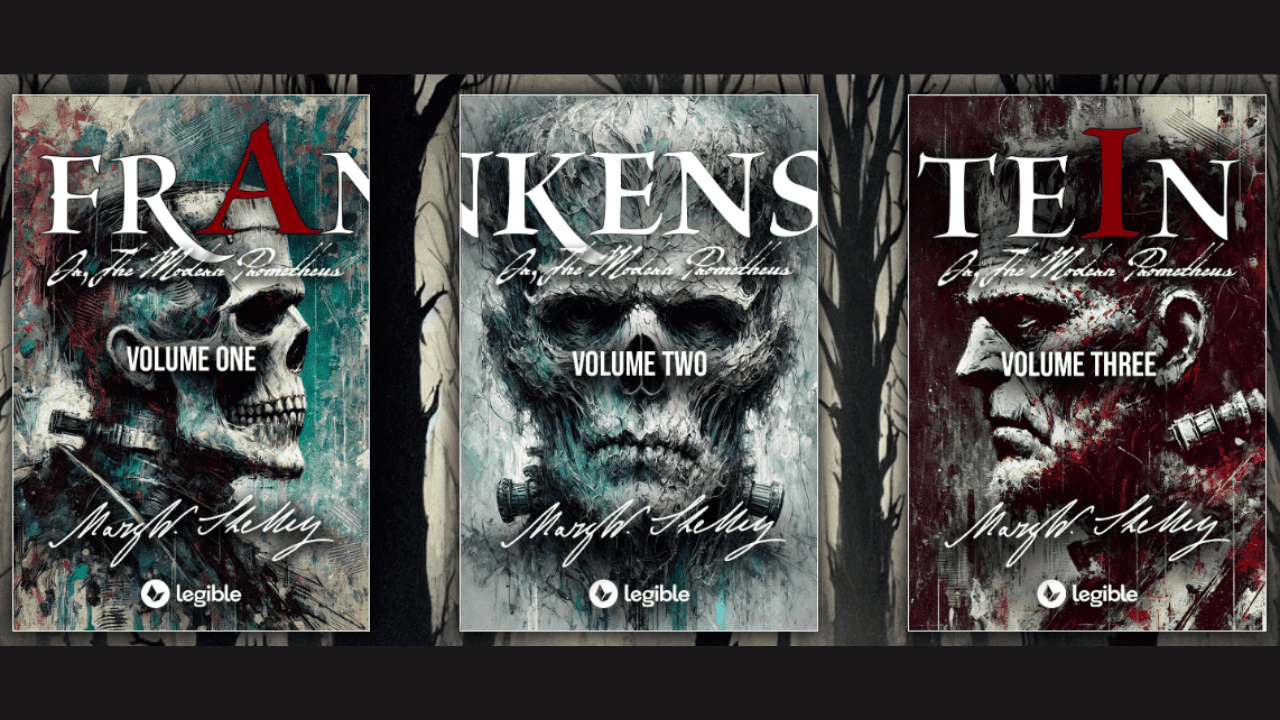Legible is using AI to bring books to life.
Its Living Books series embed an AI chatbot that lets you converse with your favorite book characters. Imagine having a heart-to-heart talk with Frankenstein, from the Mary Shelley classic, to explore his feelings of rejection and loneliness after his creator abandoned him.
Other ways Legible is embedding AI into the reading experience is through LibrarianAI, which will give you personalized book recommendations and book summaries and helps you find ebooks and audiobooks. Coming soon is an audio version of LibrarianAI where you just ask the chatbot for help.
Legible also is working on enabling readers to convert ebooks to audiobooks, read in a voice of your choice. In the future, you can upload your own voice or voice of a loved one to read to you. (Legible stresses that it is not training the AI on the book content, nor is it using AI to create content.)
The AI Innovator caught up with Legible CEO and co-founder Kaleeg Hainsworth to talk about his company and why he thinks the readership experience needs to be reinvented.
Tell us about Legible. What problem are you aiming to solve?
Legible exists to transform the digital reading experience. In a world where most e-book platforms focus on transactional sales and isolated reading, we’re building a sustainable, accessible, and beautiful way to access books and connect with stories. Our mission is to make reading as widely available as music and film, blending discovery, interactivity, and a visually enhanced experience that engages readers of all ages and backgrounds. At Legible, we aim not to just be an ebook and audiobook platform but a home for global literacy, ensuring that anyone, anywhere, can access knowledge and stories.
How did you come up with this business idea? Was there an ‘aha’ moment?
I’ve been developing digital books for three decades. The idea for Legible grew out of personal frustration with how digital reading had been confined to clunky, monochrome, non-interactive experiences. Single-use reading devices limited the possibilities and polluted the environment – they are inaccessible to most of the population anyway. Then it hit me: Reading digitally could be more immersive, interactive, and inspiring if we used the same design principles we see in other media formats. With the advent of EPUB3 and HTML5, we finally had the tools to make this a reality. I wanted to build a platform that not only made e-books and audiobooks accessible and enjoyable, but also offered a new level of beauty and functionality.
Can you walk us through the early days of the company? What were some of the biggest challenges you faced when getting started?
Starting Legible was a venture into uncharted territory. We weren’t just launching a platform; we were pioneering a new way of reading. The biggest challenge was assembling a team that could envision, design, and execute a revolutionary digital reading experience while staying true to our values of accessibility and sustainability. Going public as an RTO was also certainly a big challenge and venture all on its own. Building partnerships with publishers, securing content, and creating a unique, user-friendly interface from scratch were all major hurdles. But these challenges were critical; they refined our mission and strengthened our resolve.
How did you fund the company in the beginning? Did you bootstrap, seek venture capital, or use another approach?
In the beginning, we believed so strongly in Legible’s mission that we started with personal investments and bootstrapping to get it off the ground. Knowing we could disrupt the market by focusing on accessible, sustainable reading, I found like-minded investors who capitalized the company. Eventually we raised over $20 million. As we gained visibility, we attracted like-minded investors who believed in our vision of a more inclusive, eco-friendly digital reading platform. With the help of early investors who shared our values, we’ve been able to build a solid foundation and grow strategically. Every worthy goal takes a village to achieve.
What was the first big milestone for your company, and how did you achieve it?
The first big milestone was securing content from major publishers. This wasn’t easy, as we were challenging the traditional e-book model by presenting something entirely new. However, our emphasis on accessibility, interactive design, and sustainable impact convinced publishers that Legible could bring something unique to the table. That achievement solidified our credibility, allowing us to focus on the next big milestone: creating a visually engaging, accessible platform.
What qualities or traits do you think helped you most in getting your company off the ground?
Relentless passion for making a difference has been central to Legible’s journey. I believe my background in literature, technology, and environmental advocacy equipped me to bridge disciplines and see beyond conventional boundaries. Staying adaptable, maintaining a clear vision, and fostering a team culture of creativity and resilience were also crucial. Building a startup with a mission-driven approach requires not only innovation, but a steadfast belief that what you’re doing is truly valuable.
What advice would you give to someone who is about to take the leap and start their own company?
Commitment is essential. Find a mission you’re deeply passionate about, because that’s what will carry you through the inevitable rough patches. Surround yourself with people who are smarter than you in their areas of expertise and who align with your values. Flexibility, listening to feedback, and staying true to your mission are also keys to success. Remember, it’s a marathon, not a sprint. Measure your progress in milestones and celebrate each one – they’re the fuel for the journey. Start the journey with mountains of hope, so you will have some pebbles left for the last mile to success. Also, what is success? I think that’s critical to define before one takes the leap. Plato said an unreflected life is not worth living, and this certainly applies to all our ventures in life. Know before you go. Umberto Eco says somewhere that ‘we know what we do, we know why we do it, but we don’t know what we do does.’
Looking back, is there anything you would have done differently in the early stages of building your company?
If I could go back, I’d put an even greater emphasis on the user experience from the outset. We knew we wanted a unique platform, but the fine-tuning we later did in understanding our audience’s needs could have started earlier. Additionally, securing strategic partnerships sooner would have accelerated our impact. But ultimately, each step has been a learning experience, and those early lessons are now part of Legible’s DNA, helping us continue to evolve and improve.

